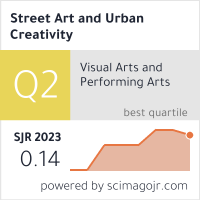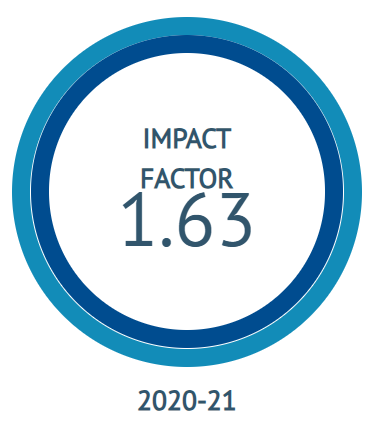The Dawn of the 3d Spray
Creating Street Art Using Polyurethane Foam
DOI:
https://doi.org/10.25765/sauc.v6i2.217Palabras clave:
3D, Street Art, Design, Mural, Spray PaintResumen
The diversity of techniques, methods and tools in creating Graffiti and Street Art allows artists to constantly evolve and discover new ways to express their ideas and implement their work. At the same time, a large number of researchers study and observe artists and their work, in an attempt to experiment with the emergence and spread of the phenomenon of urban art in combination with other scientific environments, such as engineering, robotics, programming and more. In this article, after the introduction to the power and importance of spray paint as a tool and symbol for the evolution of urban art, a first glimpse on the street artist - designer follows. This new type of creator can intervene radically in shaping the urban landscape by properly utilizing the designers’ toolbox to help innovative ideas come to fruition. One of these ideas is to use polyurethane foam as a "three-dimensional spray". Using it, the artist can create embossed or three-dimensional works on a large scale, taking existing practices one step further. A case study illustrated by a variety of images is presented before the conclusion of this paper, describing the creation of a lion's head directly on the wall using polyurethane foam spray and then painting it with graffiti spray paint.
Descargas
Estadísticas globales ℹ️
|
220
Visualizaciones
|
101
Descargas
|
|
321
Total
|
|
Descargas
Publicado
Cómo citar
Número
Sección
Licencia
Los autores/as que publiquen en esta revista aceptan las siguientes condiciones:
- Los autores/as conservan los derechos de autor.
- Los autores/as ceden a la revista el derecho de la primera publicación. La revista también posee los derechos de edición.
- Todos los contenidos publicados se regulan mediante una Licencia Atribución/Reconocimiento-SinDerivados 4.0 Internacional. Acceda a la versión informativa y texto legal de la licencia. En virtud de ello, se permite a terceros utilizar lo publicado siempre que mencionen la autoría del trabajo y a la primera publicación en esta revista. Si transforma el material, no podrá distribuir el trabajo modificado.
- Los autores/as pueden realizar otros acuerdos contractuales independientes y adicionales para la distribución no exclusiva de la versión del artículo publicado en esta revista (p. ej., incluirlo en un repositorio institucional o publicarlo en un libro) siempre que indiquen claramente que el trabajo se publicó por primera vez en esta revista.
- Se permite y recomienda a los autores/as a publicar su trabajo en Internet (por ejemplo en páginas institucionales o personales), una vez publicado en la revista y citando a la misma ya que puede conducir a intercambios productivos y a una mayor y más rápida difusión del trabajo publicado (vea The Effect of Open Access).













